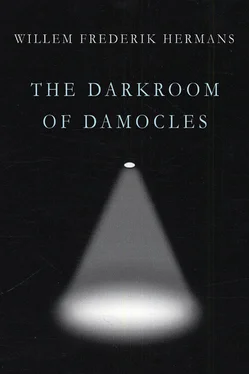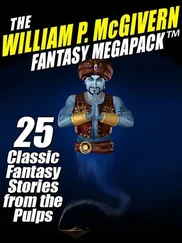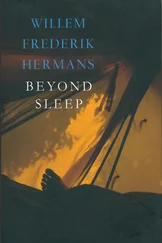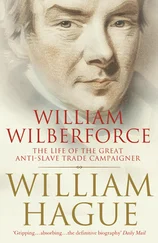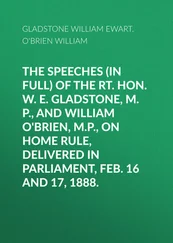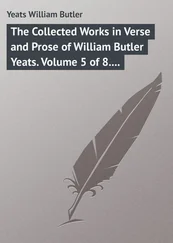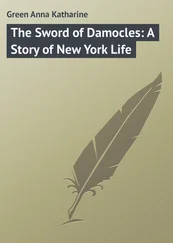‘What did the Germans say to that?’
‘They said you’d already told them everything.’
‘They just said that to mislead Zéwüster, to get him to make a confession.’
‘By that time you and Ebernuss were rather good friends, weren’t you?’
‘Zéwüster lied,’ said Osewoudt. ‘He may have lied to save me, because the man I shot was Knijtijzen. The Germans removed the bullets from Knijtijzen’s body, and they were traced to my pistol.’
Selderhorst slapped the papers down on the desk, and in doing so upset the pile. The whole mass of files toppled over, spilling on to the floor in a large, multicoloured fan.
This was ignored by Selderhorst, who seated himself astride his chair again, his forearms on the back and his chin in his hands. ‘Tell me, Osewoudt, what did the man you shot look like? Can you remember? You’d better tell the truth, because those people weren’t killed outright, they had time to make statements before they died.’
‘It was the man who let us in, a man with a red, bald head. He was standing to my left. I had the pistol in a rolled-up beach towel, which I held in front of my chest.’
‘Damn you!’ said Selderhorst, rising once more. ‘All right then, so it was Knijtijzen you shot at. What’s the difference?’
Osewoudt gulped for air; his face oozed perspiration.
For the next few minutes they stared at each other wordlessly. Then came a knock at the door.
‘Yes!’ said Selderhorst.
A guard entered with a small, somewhat tarnished mirror.
‘You asked for a mirror, sir?’
‘Yes! Hold it up to that man’s face, will you?’
The guard went up to Osewoudt and obediently held up the mirror.
Was this the face of a man who could ever have been mistaken for Dorbeck?
He looked like an office girl, the kind who knows she’ll never get a man, thirtyish — and he was only twenty-four. His nose was upturned and small, with wide, thin nostrils. His eyes seemed to be narrowed even when at rest, and yet they were not the eyes of a keen observer, they had the blank, uncomprehending look of the short-sighted. The pale, thin skin around the eyes was crinkled, and his mouth, with its thin upper lip and non-existent lower lip, appeared to be permanently set in cantankerous mode. He lifted his eyebrows, making lines appear on his forehead, which continued to shine with the white gleam of a porcelain washbasin. And then there were the thin bat’s ears, still rosy even now. And the pale, silky hair, which was still pale though greasy and matted. The cheeks smooth and round as a baby’s bottom, the jaw seemingly boneless. And to cap it all: the dimple in the middle of the chin.
He pushed the mirror away, and said: ‘But don’t you have the photo circulated by the Germans with my name next to it? That wasn’t a picture of me, it was a picture of Dorbeck. It was quite obvious that it wasn’t me in the picture. Surely you could use that to track Dorbeck down with instead of a photo of me?’
‘Did you honestly think we didn’t have that photo? We showed it to twenty experts, side by side with yours, and eighteen out of twenty were positive that it was the same person in both photos.
‘What good would it do to start circulating the other photo at this stage? We’d only get more people coming forward saying that they’d met Egbert Jagtman at some point in their lives, and where would that get us?
‘Because Egbert Jagtman was the officer who ordered the summary execution of two Germans during the bombing of Rotterdam in May 1940! After the photo was published in the papers he gave himself up to the Germans; he said: here I am! Do what you like with me, but I’m not sorry! I’m an officer in the Dutch army. When the bombs were falling on Rotterdam the German lines were still a long way off, so I was authorised to have any German soldier shot as a franc-tireur; I don’t care if he was dropped by parachute or not, your modern techniques of warfare don’t change a thing. That is what Egbert Jagtman said in his statement, it’s all in the files.’
Selderhorst gestured behind him.
‘What happened to Egbert Jagtman?’ asked Osewoudt.
‘They sent him to a concentration camp without trial. We can’t prove that the body we saw in Oldenburg was Egbert Jagtman’s, but that the man is no longer alive is not in doubt.’
‘What if he was posing as Dorbeck, what if he’d managed to escape from Germany? That way he could have gone on being active in Holland until the end of the war, couldn’t he?’
‘Don’t talk rubbish! When did you first meet Dorbeck? Was it on 10 May, yes or no?’
‘Yes.’
‘Did he call himself Dorbeck then?’
‘Yes.’
‘What reason could Jagtman have had to introduce himself as Dorbeck in the first shop in Voorschoten he happened to go into?’
‘Maybe he liked a bit of mystery.’
‘Rubbish. You’re the one with a taste for mystery. Let’s see, that shooting incident in Haarlem — was Dorbeck there, yes or no?’
‘Yes he was, he was on the lookout.’
‘Ah. The shooting took place on 23 July, 1940. Yes or no?’
‘Yes.’
‘Right. But we know that Egbert Jagtman had already turned himself in to the Germans on 20 July, and that he was deported to Germany two months later. In other words, Egbert Jagtman was behind bars on 23 July. In other words: the man you saw in Haarlem on 23 July cannot have been Egbert Jagtman. Do you follow?’
‘Christ almighty! It wasn’t my idea that Dorbeck and Jagtman were the same person! I never said he was Egbert Jagtman. I said his name was Dorbeck. And if Jagtman and Dorbeck were in fact the same person, how do you explain the following? As I told you before, when I first met Dorbeck he gave me a roll of film he wanted me to develop. That’s where those three stupid photos came from: the snowman with the rifle, the three soldiers in gas masks, and the soldier in pyjamas behind a machine gun. But there was a fourth exposure.’
‘So where did it get to? You never mentioned it before — all your statements refer to three photos, not four.’
Osewoudt paused before replying. He lowered his eyes, put both thumbs in his mouth and chewed them like a little girl.
‘Well? What was the fourth photo of then?’
‘It was of Dorbeck. He had two girls with him, and it was taken outside Kleine Houtstraat 32. The number was clearly visible, and also the street name, because the house is on a corner. If Dorbeck was in fact Jagtman, and Jagtman had no connection whatsoever with that address or with what went on there, why would he have had his picture taken in front of that particular house?’
‘That depends. First tell me what happened to the photo.’
‘Something went wrong. Just as I was taking it out of the developer, my mother came in and switched on the light. I switched it off at once, but the photo was ruined — it had gone completely black.’
‘Dear me, how sad! How could you have had such rotten luck! The only photo with Dorbeck on it … and that was the very one that didn’t come out.’
‘And yet I swear to you on everything sacred to me that I saw it.’
‘Swearing won’t get you anywhere. Listen here, you halfwit, if we had just one photo of someone who might possibly be Dorbeck I’d be prepared to think again.’
‘But there is one of Dorbeck! I just remembered! I took a photo the morning after Dorbeck rescued me, on 6 April, in the house he took me to in Amsterdam! We’re in it together, in front of a mirror!’
‘Really? So where is it now?’
‘I lost my Leica when I fled. I had a shoulder bag, it was in there. I lost the bag on the way.’
‘Christ, I’m exhausted. I never get to bed before three nowadays. If you promise to stop whingeing, I’ll see if we can do something about your lost Leica.’
Читать дальше
